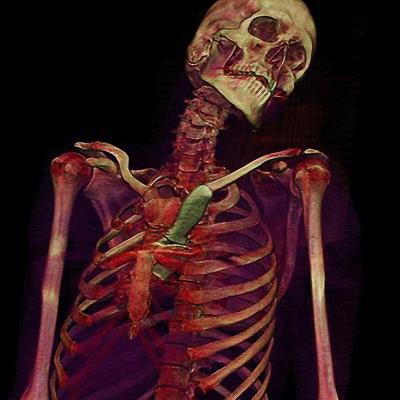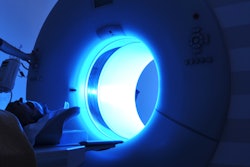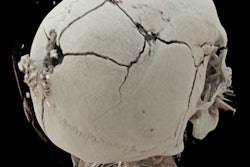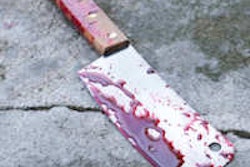
Knife crime is now so prevalent that every healthcare professional has a responsibility to become more familiar with the resulting injuries and how to treat them, according to expert speakers at a special meeting held in Birmingham, U.K., last month.
Stabbing with a knife is the most common method of homicide throughout much of Europe. A kitchen knife remains the leading weapon of choice because it tends to be readily available when a vicious argument or loss of temper occurs in the home.
"It's not just 'a London problem' -- it's everyone's problem" Nabeela Malik, trauma and general surgeon from Queen Elizabeth Hospital Birmingham, told delegates on 19 September at "Surgeons at the sharp end: Knife crime in West Midlands."
Although knife violence is endemic in most large cities and is concentrated in regions of socioeconomic deprivation, the problem of knife crime isn't restricted only to urban areas. Increasing levels of knife-related violence affect rural areas.
There were more than 47,000 knife-related incidents in the U.K. in the 12 months to March 2018, representing a 17% increase on the previous year, and this is the highest number since the Home Office Homicide Index began in 1946. According to the Home Office, the most common method of killing, for both male and female victims, was by a knife or other sharp instrument, and men between the ages of 16 and 25 are disproportionately affected as both victim and perpetrator.
 Images of a murder victim who was stabbed in the chest with a kitchen knife. All images courtesy of Prof. Anders Persson, PhD, director of the Center for Medical Image Science and Visualization (CMIV) in Linköping, Sweden.
Images of a murder victim who was stabbed in the chest with a kitchen knife. All images courtesy of Prof. Anders Persson, PhD, director of the Center for Medical Image Science and Visualization (CMIV) in Linköping, Sweden.There were 285 such homicides recorded in the 12 months to March 2018. Sixty-nine percent of victims were male and 31% female. Just under two-thirds of sharp instrument homicide victims were white (63%, 179 homicides), while a further quarter (25%, 70 victims) were black.
Increasing numbers of women are now carrying knives for protection. In Liverpool, U.K., for instance, there was a 54% increase in the number of women carrying knives in 2018, making Merseyside the second highest place in the U.K. for female knife possession after London.
Extremity injuries are by no means a minor injury because force of up to 100 kg/1,000 Newtons can be exerted in a savage attack and can cause severe vascular, soft-tissue, and bony injury requiring expert surgical input from a number of specialist trauma teams and swift imaging to locate size and positioning of weapon, according to Colonel Paul Parker, specialist surgeon in lower limb reconstruction at the Queen Elizabeth Hospital in Birmingham.
Plastic surgery is required in almost 78% of limb injuries. Overall, plastic surgery is required for 35% of all knife-injured patients, general surgery in 23%, and cardiothoracic in 22% of knife-crime victims.
 Above: Shaded surface display CT reconstruction highlights the entry point of the blade on the thoracic surface. Below and bottom: Volume-rendered 3D reconstructions demonstrate the relationships between the blade and the sternum. All images courtesy of Prof. Giuseppe Guglielmi, University of Foggia and the Scientific Institute Hospital in San Giovanni Rotondo, Italy.
Above: Shaded surface display CT reconstruction highlights the entry point of the blade on the thoracic surface. Below and bottom: Volume-rendered 3D reconstructions demonstrate the relationships between the blade and the sternum. All images courtesy of Prof. Giuseppe Guglielmi, University of Foggia and the Scientific Institute Hospital in San Giovanni Rotondo, Italy.
The difference in number of knife crime incidents in the U.K. compared with resultant deaths is equivalent to a 0.6% mortality. Studies show that chest, abdominal, and head and neck injuries are the cause of most knife-crime deaths, yet the majority of knife-crime victims have penetrating limb injuries.
According to the Trauma, Audit and Research Network (TARN) chest injury accounts for over 50% of deaths but only 12% of admissions to the emergency room. Conversely, limb injury accounts for 64% emergency room attendance, but considerably less mortality.
The main problem with a knife injury is that often the victim does not realize he or she has been stabbed because the injury is usually inflicted swiftly and there is little external evidence of trauma; what appears to be a small stab incision may in fact belie massive internal organ laceration and hemorrhage, leading to quick coagulopathy and death.
Multiple specialties are involved in the lifesaving work needed for knife-crime victims. The importance of swift radiologic examination in the emergency room is crucial to the success of surgery in an unpredictable trauma situation.
Because many stabbing victims die before reaching hospital it is vital the trauma team has as much information about the site of the wound(s) and can arrange to have the radiology team on standby or the use of a mobile machine depending on wound location, weapon, and ease of accessibility. Positioning patients may present a challenge as often the weapon remains in situ until it can be removed in a controlled surgical situation.
The radiological evaluation of penetrating knife injuries can be daunting given the emergency circumstances requiring imaging. The challenges facing the radiologist in imaging assessment of penetrating trauma impacts significantly on the effective management of these patients in the acute setting.
CT's increasing value
The management of these injuries has changed over the years, Dr. Jon Gonzalez Ocio, a radiologist at Cruces University Hospital in Barakaldo, Spain, told attendees at ECR 2019. At the beginning of the 20th century, the treatment was surgical in all cases, but in the mid-1960s, authors advocated conservative treatment, given the high incidence of negative laparotomies and the risks they entail for the patient. Imaging techniques became increasingly important.

There are still many cases in which surgery is required, however. The clear indications are hemodynamic instability, clinical signs of peritonitis, and evisceration. "These last two are more doubtful and do not occur at all centers," he noted.
In particular, the development of software that allows multiplanar reconstructions has boosted the value of CT.
"We must remember that CT is indicated in those cases in which the patient is already stabilized. If the patient is not stable, the guidelines indicate the correct action that decreases the mortality is the surgical intervention," he said.



















